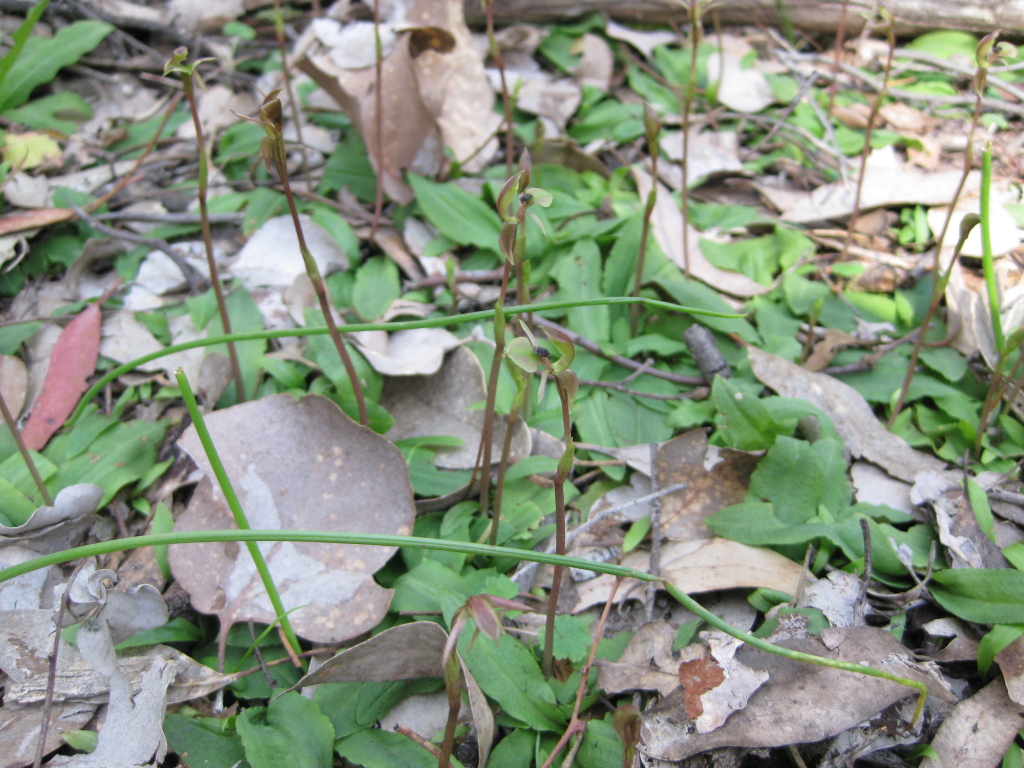Chiloglottis trapeziformis
Fitzg. Dainty Bird-orchidFlowering plant 8–14 cm tall. Leaves narrow-oblong to elliptic, 30–80 mm long, 10–25 mm wide, sessile to shortly petiolate, dark green. Flower erect, greenish to purplish; dorsal sepal erect, incurved, spathulate, 10–14 mm long, with apical point; lateral sepals spreading, sometimes recurved, divergent, linear, 10–15 mm long; petals deflexed against ovary, broad-linear, slightly asymmetric, 8–11 mm long. Labellum on long claw, erect, lamina broadly rhombic, angular, 8–12 mm long, apex usually obtuse; calli dark, most tightly clustered at base of expanded part of labellum, resembling an ant's head, tiny calli irregularly scattered on claw. Column widely winged in upper half, rounded apices of the wings higher than the anther. Flowers Aug.–Nov.
Wim, VVP, VRiv, GipP, OtP, Gold, CVU, NIS, EGL, EGU, HSF, HNF, VAlp. Also SA, Old, NSW, Tas. Of scattered occurrence in open forests and coastal scrubs from lowlands and foothills east of Melbourne, with isolated collections from the west near Anglesea, Inverleigh, Ballarat and Inglewood. Rather common in the far north-east (Corryong district).
Hybridises with Chiloglottis valida to produce the named hybrid C. ×pescottiana.
Entwisle, T.J. (1994). Orchidaceae. In: Walsh, N.G.; Entwisle, T.J., Flora of Victoria Vol. 2, Ferns and Allied Plants, Conifers and Monocotyledons, pp. 740–901. Inkata Press, Melbourne.
 Spinning
Spinning



